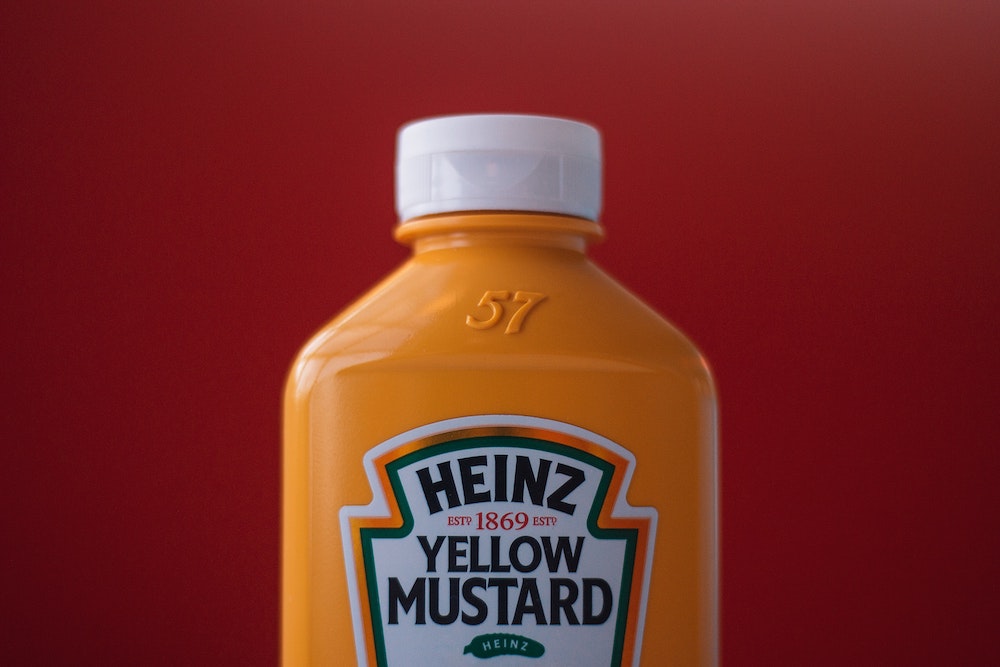65 Sample survey questions for a tasty new food product

Creating a successful food product depends on crucial market insights. Check out these sample survey questions for a new food product to get you started.
Whenever you try to build something new, it’s best done together, right?
In your food product development process, you don’t just say ‘bon appétit’ when you market a new product and put it in front of your ideal customer. What if they don’t care for it at all?
Take a step back. Try to create something together.
How? No need to invite a bunch of hungry customers to your production facility and let them play with ingredients. With a new food product survey, you can perfectly gauge what they’re hungry for and create a product that’s a match made in heaven.
We’re following up our recent guide on market research for product development with some practical examples of survey questions you can use. This article will focus specifically on food products, but make sure to also take a peek if you’re stuck on another type of product — we’re sure you’ll find some inspiration either way.
What is a new food product survey?
A food product survey gathers consumer feedback on various aspects of a new food item, including taste, texture, packaging, price, brandin, and overall appeal.
It helps you understand customer preferences, identify potential improvements and gauge purchase intent, making sure the product meets market expectations and stands out against competitors.
New food product survey questions
For your food product survey or questionnaire, you’ll need to ask the right questions. Our research experts have written a guide on how to write good survey questions.
And here are they key food product survey questions to ask your target customers.
1. Product appeal and first impressions
This category helps gauge consumers’ initial reactions to the product’s look, feel, and overall visual appeal. It explores whether the packaging and presentation are attention-grabbing and if the product stands out on shelves.
Understanding first impressions is essential for identifying potential attraction or hesitation points. These insights help refine product design and branding for stronger market impact.
- What are your first impressions of this product?
- How appealing does the packaging look?
- Would this product catch your eye on a store shelf?
- How would you rate the product’s appearance?
- What words come to mind when you see this product?
- How unique does this product look compared to others?
- Does the product’s color scheme appeal to you?
- Would you describe the product’s branding as modern or traditional?
Nail your next product launch!
Learn how your customers think, act and buy to give them the products they want. With an audience of over 150+ million people in 59 countries, our data gives you an accurate picture of your product demand.
Nail your launch!2. Taste, texture and quality
Evaluating the sensory experience is crucial to product success. This category dives into how consumers perceive taste, texture, freshness, and overall quality.
It also helps understand how well the product meets expectations compared to similar items. Feedback on flavor balance and satisfaction levels can guide recipe adjustments and quality control.
- How would you describe the taste of this product?
- Is the texture enjoyable?
- How fresh does the product taste?
- How does the product compare to similar items in terms of quality?
- Would you describe the flavor as balanced?
- Does the product have an aftertaste you enjoy?
- How satisfying is the portion size?
- Would you describe the product as indulgent or light?
3. Usage and consumption habits
Knowing how and when consumers plan to use the product provides key insights for marketing and distribution. This category explores frequency of use, situational fit (snack, meal or on-the-go) and whether it’s suitable for social settings.
Understanding consumption habits helps optimize serving formats, portion sizes and product positioning.
- When would you most likely consume this product?
- How often would you buy this product?
- Would you serve this product at a gathering?
- Is this product more suited for snacks or meals?
- Would you take this product on the go?
- Would you use this product as a meal replacement?
- How convenient is the product’s preparation?
- Would you repurchase this product for regular use?
4. Purchase intent and price sensitivity
This category measures consumers’ likelihood of purchasing the product and their perception of its value. It assesses acceptable price ranges, willingness to buy on sale and views on premium positioning.
Price sensitivity insights inform pricing strategies and promotional tactics for maximum market adoption.
- How likely are you to buy this product?
- At what price would you consider this product a good deal?
- Would you purchase this product on sale?
- How often would you purchase this product if the price were right?
- Do you see this product as a premium offering?
- Would you pay more for a larger size option?
- How important is value for money when choosing this product?
- Would a subscription or bulk purchase option appeal to you?

5. Health and dietary preferences
With growing health awareness, it’s vital to align with dietary needs and wellness trends. This category evaluates how well the product fits into consumers’ health-conscious choices, including ingredient appeal, nutritional value and dietary compatibility.
Understanding these preferences ensures the product appeals to a broad audience and stands out in the better-for-you category.
- Does this product meet your dietary needs?
- Would you consider this a healthy option?
- Are the ingredients appealing to you?
- How important is nutritional content in your buying decision?
- Would you choose this product over a less healthy alternative?
- Does the product’s calorie count influence your decision?
- How important are organic or natural ingredients to you?
- Would you prefer a lower-sugar or low-fat version?
6. Brand fit and perception
Consumers often associate product quality and innovation with brand reputation.
This category explores how well the product aligns with the brand’s identity and values. It assesses whether the product strengthens brand loyalty, elevates brand perception and fits into the existing product portfolio.
- Does this product align with what you expect from this brand?
- Would this product make you more likely to buy from this brand?
- How innovative does this product feel for the brand?
- Does this product feel consistent with the brand’s values?
- Would you recommend this product based on brand reputation?
- Does this product elevate the brand’s image in your mind?
- How well does the product’s quality reflect the brand’s standards?
- Would you trust this brand to expand into similar categories?
7. Competitor comparison
Understanding how consumers perceive the product against competitors helps position it more effectively.
This category measures comparative quality, value and uniqueness, identifying key differentiators. It also assesses whether the product offers enough appeal to prompt brand switching.
- How does this product compare to your current favorite?
- What sets this product apart from similar options?
- Would you switch from your usual brand for this product?
- Does this product offer better value than competitors?
- How does this product’s flavor compare to others?
- Would you describe this product as more innovative than others?
- How do the packaging and design compare to competing brands?
- Would you prefer this product over a store-brand version?
8. Marketing and messaging insights
Effective messaging drives awareness and purchase intent.
This category tests the clarity and appeal of product names, descriptions and promotional claims. It also explores the impact of influencer endorsements, marketing offers and key benefit statements to refine campaign strategies.
- Does the product name sound appealing?
- Would the described benefits persuade you to buy it?
- Do the product claims seem believable?
- How clear is the product’s purpose?
- Which marketing messages would resonate most with you?
- Would influencer endorsements affect your decision?
- How appealing are potential promotional offers for this product?
- Does the product’s tagline capture your interest?
9. Emotional connection and experience
Building an emotional connection increases long-term loyalty.
This category uncovers the product’s ability to evoke excitement, nostalgia and positive experiences. It also explores how well the product fits into consumers’ lifestyles and whether they’d recommend it to others.
- How excited are you to try this product?
- Would you associate this product with positive experiences?
- Does this product remind you of something familiar?
- How likely are you to share this product with friends or family?
- Does this product evoke any specific emotions?
- Would this product fit into your regular routine?
- Does the product feel nostalgic or new?
- Would you purchase this product for special occasions?
10. Feedback and suggestions
Consumer feedback fuels product improvement and innovation.
This category gathers suggestions on flavors, packaging, portion sizes and eco-friendliness. It also helps identify unmet needs and potential enhancements to ensure the product remains competitive and customer-centric.
- What would you change about this product?
- Are there any flavors you’d prefer?
- Would you suggest any packaging changes?
- How could this product better meet your needs?
- What’s one feature that would make this product perfect?
- Are there additional formats (like single-serve or family-size) you’d want?
- Would you prefer more eco-friendly packaging?
- How important is product customization to you?
What information do you need to develop a successful food product?
A new food product survey shouldn’t be a carte blanche with all the options your food scientists can create. You make it more specific and tie it to, ideally, one objective.
Before we get into the list, here are some of the most exciting direct-to-consumer food brands to whet your appetite. And insightful new product research isn’t limited to food products—here are some successful brands who’ve tested beverage branding ideas with consumer research.
What are you trying to achieve from the survey?
Let’s look at some of the factors that play a role in food products.
- Taste: salted caramel, cheesy onion… you name it. What taste are your customers missing in the shelves from your brand — and others?
- Size: would your customers like to have a travel-sized version of some of their favourite foods — or would they like a bag of crisps that’s larger than life?
- Nutrition: how well does a certain product fit into the lifestyle and goals of your customers? What are they missing that would get them to reach those goals faster?
- Occasion: when is the product being consumed? For what moment does a consumer need something extra?
You can’t ask your customers to fill in all the blanks. You should use the survey to fill in the blanks you can’t just assume. Let’s say your market research has shown that there’s a considerable demand for one-person portions of healthy vegan meals, for the microwave. That ticks the boxes for size, nutrition and occasion.
But you’re missing an important element: taste. This is what you can find out in your survey.
What information do you need to develop a successful product?
It depends on who you ask.
Product managers tend to say “go” if a product concept does not look bad; researchers want to say “stop” unless it looks good.
Jay E. Klompmaker, G. David Hughes & Russell I. Haley, Test Marketing in New Product Development
There’s a difference between a product reaching certain requirements, and it being set up for success. Product managers want to launch a successful product. Researchers want to prevent expensive failed launches.
Of course, you’ll need both, but a new product survey and ad copy testing should be used for product managers — to reach for excellence and step away from the status quo. The bare minimum that your product needs to succeed needs to be established before you launch a survey. What you’ll get from the survey is almost literally the icing on the cake of your new product.
So, what information do you need to develop a successful product?
Find out what customers are missing in the supermarket. What flavours they could not stop buying if they exist. What products they haven’t been buying because of their dietary restrictions.
Or gather information that will help you create a product that is unique in some way. Go beyond learning what products your customers already love — use that only as your baseline.
Organic Valley has used Attest go find out what flavours to introduce next – and what to name them.
“We were able to identify the top three flavors that we then wanted to bring into the pilot labs. But while our primary insight was around flavors, we also got back a secondary unanticipated insight around how the consumers were clustered around the naming of products as well.
It wasn’t just around choosing the right flavor but it was choosing the right flavor in the context of a broader name. To get specific, one of the options was ‘spicy tomato salsa egg bites’ and the consumers said it reminded them of the Mexican dish huevos rancheros. And so then we were able to test ‘spicy tomato salsa egg bites’ versus ‘Mexican egg bites with rancheros salsa’.”
Did that get you hungry for more? Read the full Organic Valley case study.

You came for questions, and that’s what we’ll give you. We’ve gathered some practical examples of what you could ask in a new food product development survey, or when you’re ready to create a food brand.
How to create a food survey with Attest
Creating an effective food survey requires a thoughtful approach, combining the right questions with intuitive tools.
Start by defining your research goals – whether it’s testing product appeal, pricing or brand fit. Use clear, unbiased language and a mix of question types (like multiple choice, scale ratings, and open-ended responses) to capture both qualitative and quantitative insights.
With Attest, you can quickly build, distribute, and analyze your survey, reaching your target audience and using reliable consumer insights to make launch decisions you know your target audience will eat up!
Nail your next product launch!
Learn how your customers think, act and buy to give them the products they want. With an audience of over 150+ million people in 59 countries, our data gives you an accurate picture of your product demand.
Nail your launch!Tell us what you think of this article by leaving a comment on LinkedIn.
Or share it on:

